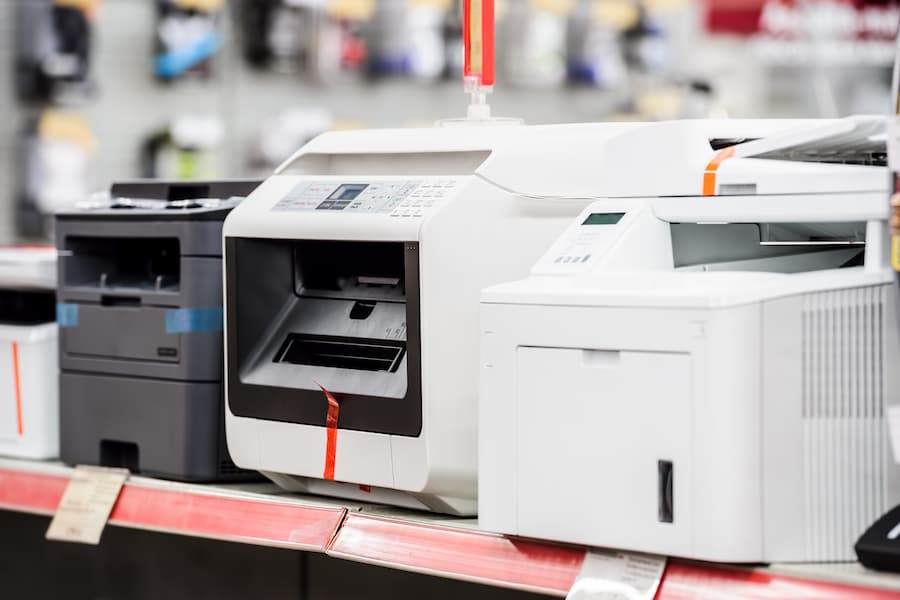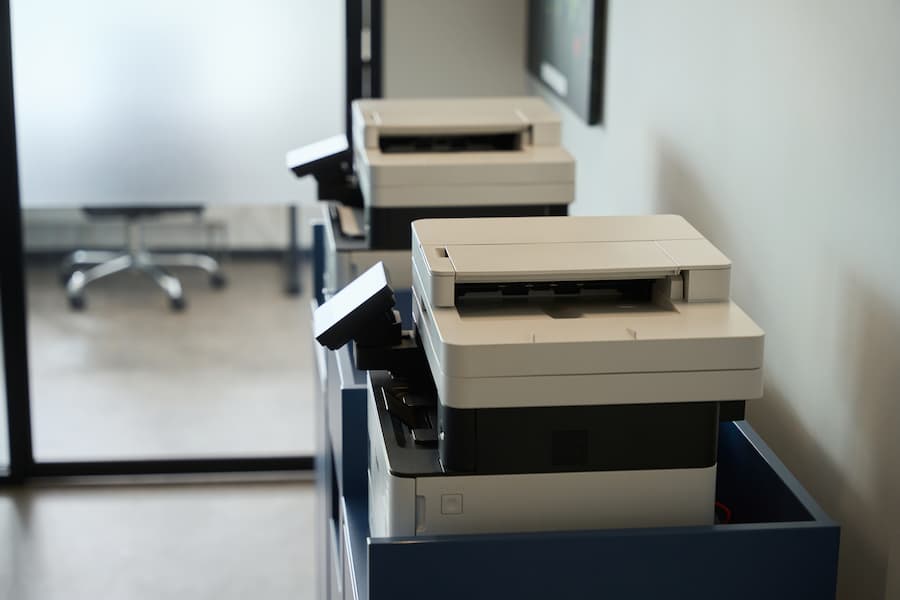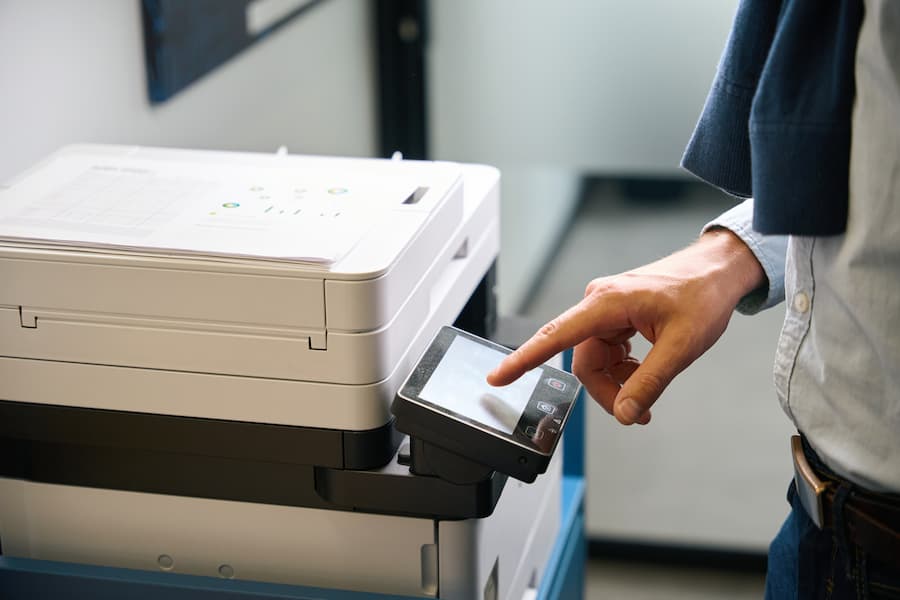Managing Your Printer Fleet
Managing a printer fleet is crucial for any business with multiple printers. It ensures that each printer operates efficiently and cost-effectively. Without proper management, businesses may face frequent breakdowns, high costs, and security risks. By implementing a well-structured printer fleet management strategy, businesses can save money, improve productivity, and enhance data security.
For instance, a managed print services approach can automate tasks like toner replacement and firmware updates, reducing downtime. Moreover, it helps in monitoring usage patterns and optimizing print operations, ensuring that each printer in the fleet is used effectively. Above all, effective printer fleet management minimizes wastage and extends the lifespan of printers, making it a vital aspect of any business’s operational strategy.
Understanding Printer Fleet Management

Definition and Scope of Printer Fleet Management
Printer fleet management encompasses the oversight and control of a group of printers within an organization. It involves managing hardware, consumables, and the software that supports them. The scope includes everything from installation and maintenance to security and optimization.
What is a Printer Fleet?
A printer fleet refers to the collection of printers owned or leased by a business. These printers are connected to a network, allowing for centralized management. By managing this fleet effectively, businesses can streamline their printing processes and reduce operational costs.
Why is Management Necessary?
Effective management is necessary to ensure optimal performance and longevity of the printers. Without proper management, printers can become a source of frustration due to frequent malfunctions, high maintenance costs, and security vulnerabilities.
Benefits of Effective Printer Fleet Management
Cost Savings: One of the primary benefits is cost savings. By monitoring usage and automating tasks like toner replacement, businesses can significantly reduce costs associated with consumables and maintenance.
Improved Efficiency: Managed print services help in automating routine tasks and alerting for potential issues before they become significant problems. This ensures that printers are always ready for use, reducing downtime and increasing productivity.
Enhanced Security: Printer fleet management also enhances security. It ensures that all printers have the latest firmware updates and are protected against potential cyber threats. Additionally, secure printing solutions can prevent unauthorized access to sensitive documents.
Assessing Your Current Printer Fleet
Conducting a Printer Audit
The first step in managing a printer fleet is conducting a thorough audit. This helps in understanding the current state of the printers and identifying areas for improvement.
Inventory Assessment: Begin by creating an inventory of all printers. Note the make, model, age, and condition of each printer. This helps in identifying which printers are nearing the end of their lifecycle and need replacement.
Usage Analysis: Next, analyze the usage patterns of each printer. Identify which printers are used most frequently and which are underutilized. This data is crucial for optimizing printer placement and usage.
Identifying Pain Points and Areas for Improvement
Once the audit is complete, identify the common issues and areas that need improvement.
Common Issues Faced: Common issues might include frequent breakdowns, high maintenance costs, and inconsistent print quality. By identifying these issues, you can develop targeted strategies to address them.
Gathering Employee Feedback: In addition, gather feedback from employees who use the printers daily. Their insights can help in identifying problems that may not be apparent during the audit. For instance, employees might highlight issues like slow printing speeds or difficulties with network connectivity.
By conducting a thorough audit and gathering feedback, businesses can develop a comprehensive understanding of their printer fleet’s strengths and weaknesses. This forms the basis for a strategic printer fleet management plan that optimizes efficiency and reduces costs.
Developing a Printer Fleet Management Strategy

Setting Objectives and Goals
Creating a comprehensive printer fleet management strategy begins with setting clear objectives and goals. Short-term goals might include reducing printer downtime and improving print quality. Long-term goals could focus on cost savings, enhancing security, and streamlining workflows.
Short-Term and Long-Term Goals
Short-term goals often involve immediate improvements, like optimizing printer usage and reducing consumable waste. Long-term goals, however, aim to align the printer fleet with overall business needs. These might include integrating new technologies or adopting more sustainable practices.
Aligning with Business Needs
Align your goals with your business needs. For instance, if your business prioritizes security, focus on implementing secure printing solutions and user authentication measures. If cost-saving is crucial, aim for reducing print costs through better resource management.
Choosing the Right Tools and Software
Selecting the appropriate tools and software is essential for effective printer fleet management. Print management software options, like WebJet Admin or PaperCut, provide advanced features such as job accounting, secure printing, and detailed analytics.
Printer Management Software Options
Popular software options include PaperCut, which offers features like user quotas and secure print release, and WebJet Admin, known for its comprehensive suite of management tools. These tools help in centralizing management and optimizing workflows.
Integration with Existing Systems
Ensure the chosen software integrates smoothly with your existing systems. This might involve compatibility with your current network, print servers, and other business tools. Integration helps in achieving a seamless print environment, reducing the need for extensive retraining or significant infrastructure changes.
Implementing Your Printer Fleet Management Plan
Assigning Roles and Responsibilities
A successful implementation of your management plan requires clearly defined roles and responsibilities. Designate a fleet manager to oversee the operations and ensure that every team member understands their part in maintaining the printers.
Designating a Fleet Manager
Appoint a dedicated fleet manager to handle daily operations, monitor performance, and address any issues. This individual acts as the point of contact for all printer fleet management activities, ensuring consistency and accountability.
Training Staff
Training staff on the new systems and processes is crucial. Conduct regular training sessions to familiarize them with the print management software and best practices. Well-trained employees contribute to a more efficient and effective print environment.
Setting Up Monitoring and Maintenance Schedules
Regular monitoring and maintenance are vital to keep your printer fleet in optimal condition. Establish a maintenance schedule that includes routine checks and timely updates.
Regular Maintenance Tasks
Regular tasks include updating firmware, replacing consumables like toner supplies, and cleaning the printers. These tasks prevent common issues and prolong the lifespan of your devices.
Monitoring Printer Performance
Use management software to monitor printer performance. Look out for inefficiencies, such as high paper waste or frequent breakdowns. Analyzing this data helps in making informed decisions and identifying areas where improvements can be made.
Cost Management and Optimization
Analyzing Total Cost of Ownership (TCO)
Understanding the Total Cost of Ownership (TCO) is essential for effective cost management. TCO includes direct costs like purchasing and maintaining printers and indirect costs such as energy consumption and downtime.
Direct vs. Indirect Costs
Direct costs involve the price of the printers, consumables, and repairs. Indirect costs include energy consumption, IT support, and the time employees spend dealing with printer issues.
Cost-Saving Opportunities
Identify cost-saving opportunities by analyzing your current expenditures. For instance, using energy-efficient printers or implementing printing policies can significantly reduce costs.
Optimizing Print Usage
Optimizing print usage is another way to manage costs. Implementing print policies, such as double-sided printing or print quotas, helps in reducing paper and toner consumption.
Implementing Print Policies
Establish clear printing policies to guide employees. Policies might include restrictions on color printing, mandatory duplex printing, and using digital documents instead of printing.
Encouraging Digital Alternatives
Encourage digital alternatives to printing, like electronic document management systems. Reducing the reliance on paper not only cuts costs but also supports sustainability initiatives.
Security and Compliance
Protecting Sensitive Information
Protecting sensitive information is a top priority. Implement secure printing solutions that require user authentication before printing. This prevents unauthorized access to documents.
Secure Printing Solutions
Secure printing solutions ensure that documents are only released to authorized users. Features like encryption and secure print release protect sensitive business data from falling into the wrong hands.
User Authentication
User authentication methods, such as PIN codes or card readers, add an extra layer of security. They ensure that only authorized personnel can access and print sensitive documents.
Ensuring Compliance with Regulations
Compliance with data protection laws and industry-specific regulations is essential. Regularly update your print management systems to adhere to the latest standards.
Data Protection Laws
Stay informed about relevant data protection laws, such as GDPR or HIPAA. Ensure that your print management practices comply with these regulations to avoid legal complications.
Industry-Specific Regulations
Different industries have specific regulations regarding data handling and security. Make sure your printer fleet management strategy aligns with these requirements to ensure full compliance.
Monitoring and Continuous Improvement

Regular Performance Reviews
Conduct regular performance reviews to assess the efficiency of your printer fleet management strategy. Use key performance indicators (KPIs) like print volume, cost per page, and downtime to measure success.
Key Performance Indicators (KPIs)
Track KPIs to identify areas of improvement. Regularly reviewing these metrics helps in making data-driven decisions and optimizing printer performance.
Adjusting Strategies Based on Feedback
Gather feedback from employees and adjust your strategies accordingly. Continuous improvement ensures that your printer fleet remains efficient and cost-effective.
What People May Also Ask
What is printer fleet management?
Printer fleet management involves overseeing and controlling a group of printers within an organization to ensure optimal performance and cost-effectiveness.
How can I save costs on my printer fleet?
Implement cost-saving measures like setting print policies, using energy-efficient devices, and conducting regular maintenance to reduce expenses.
How often should I perform maintenance on my printers?
Regular maintenance should be performed monthly, including cleaning, firmware updates, and replacing consumables as needed.
Key Takeaways for Effective Printer Fleet Management
In conclusion, managing your printer fleet effectively is crucial for optimizing costs, enhancing productivity, and improving security. Implement the strategies discussed, from conducting audits to setting clear goals and using the right management tools.
By doing so, you can ensure a seamless and efficient print environment that supports your business needs. Start today and see the positive impact on your operations.






